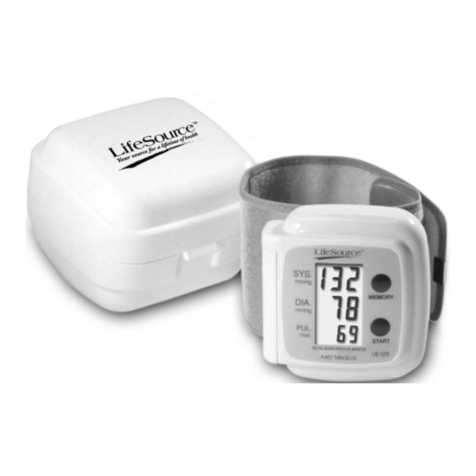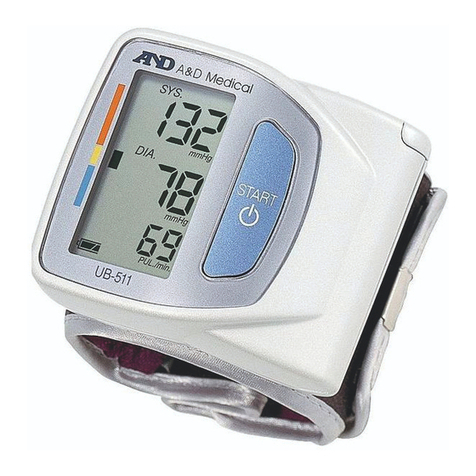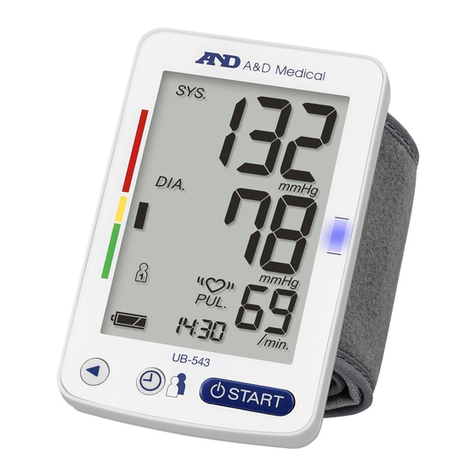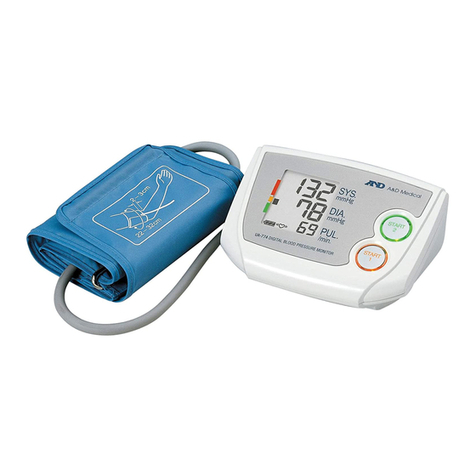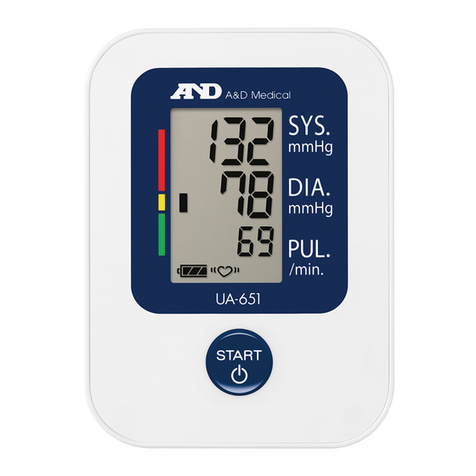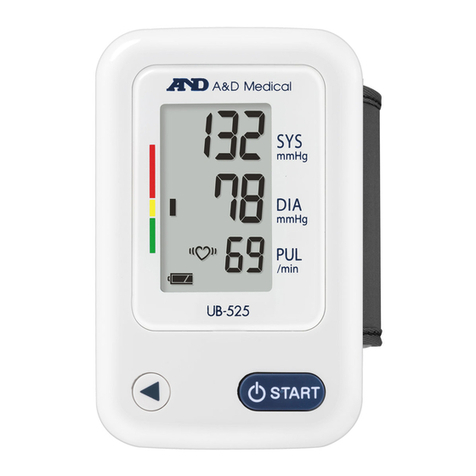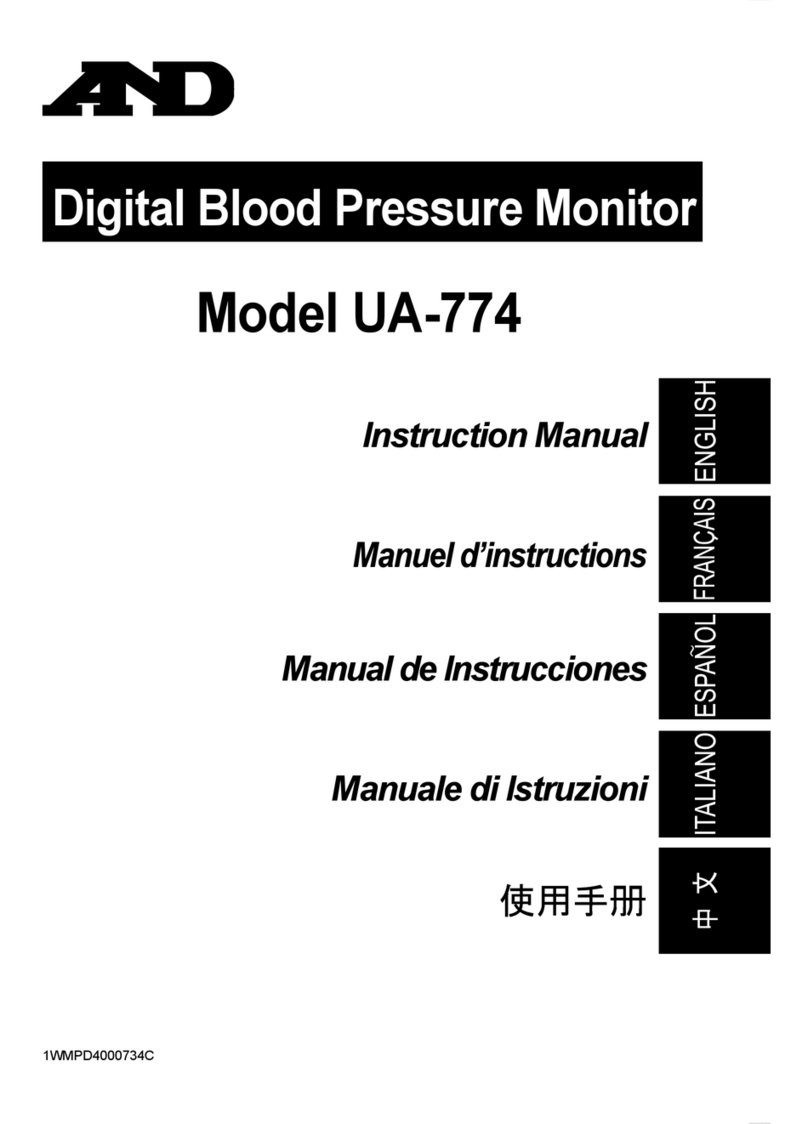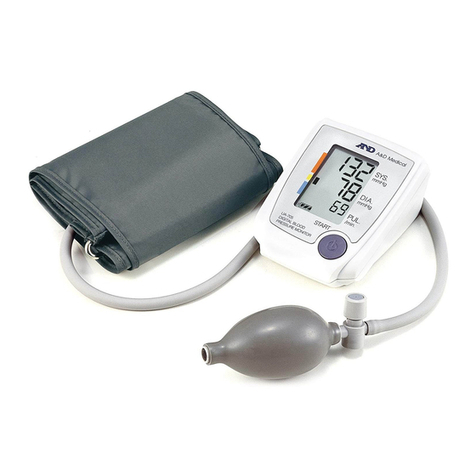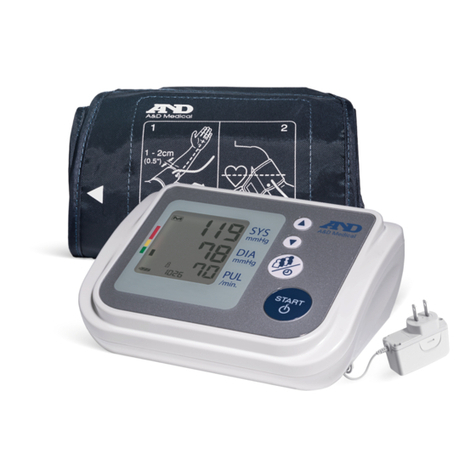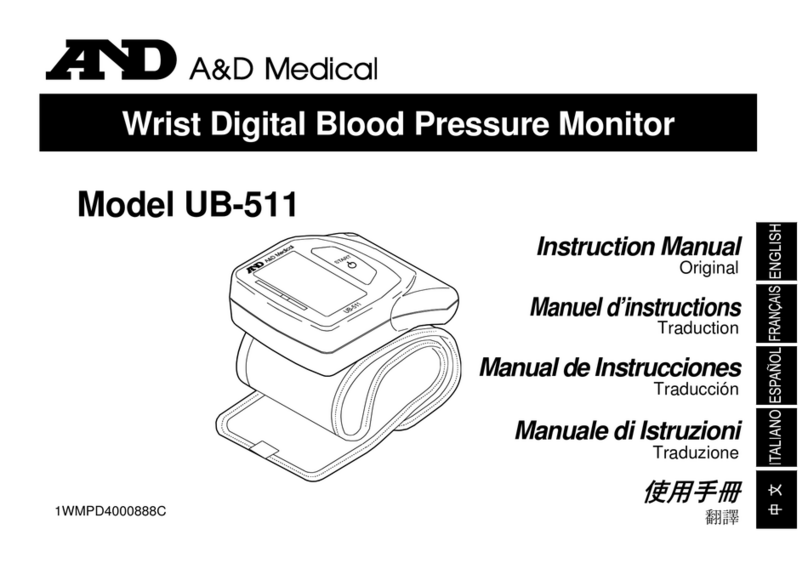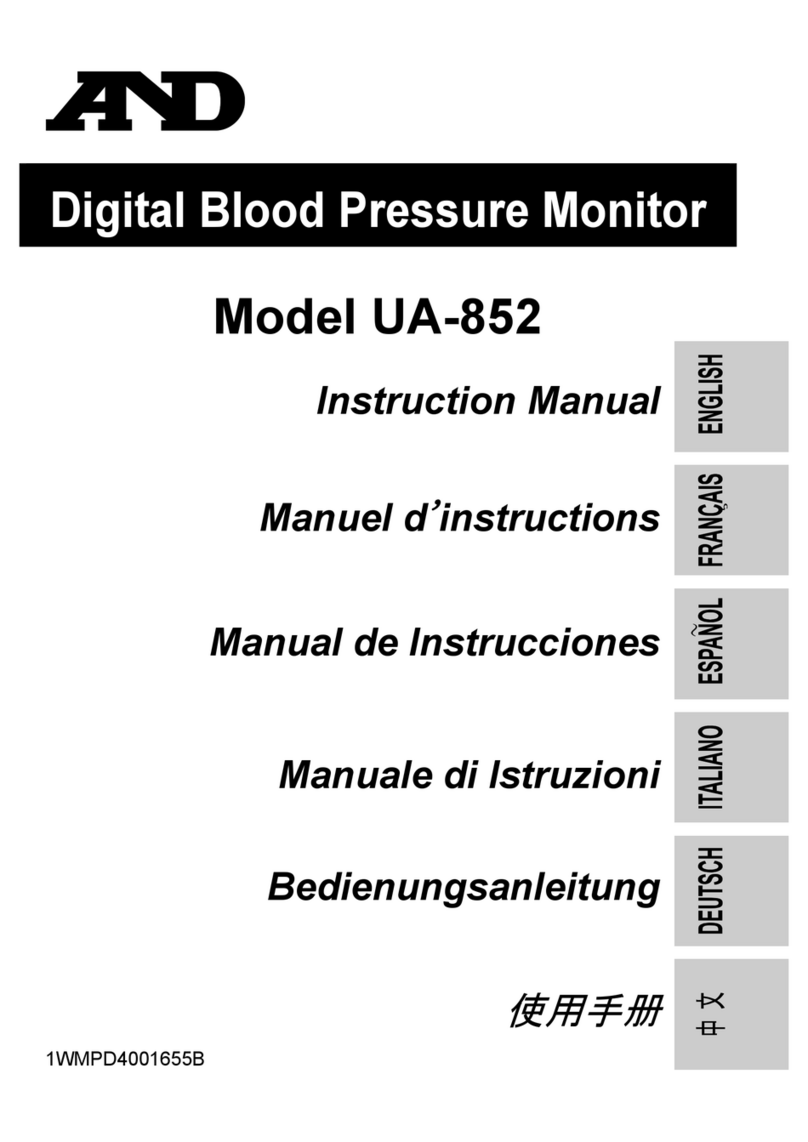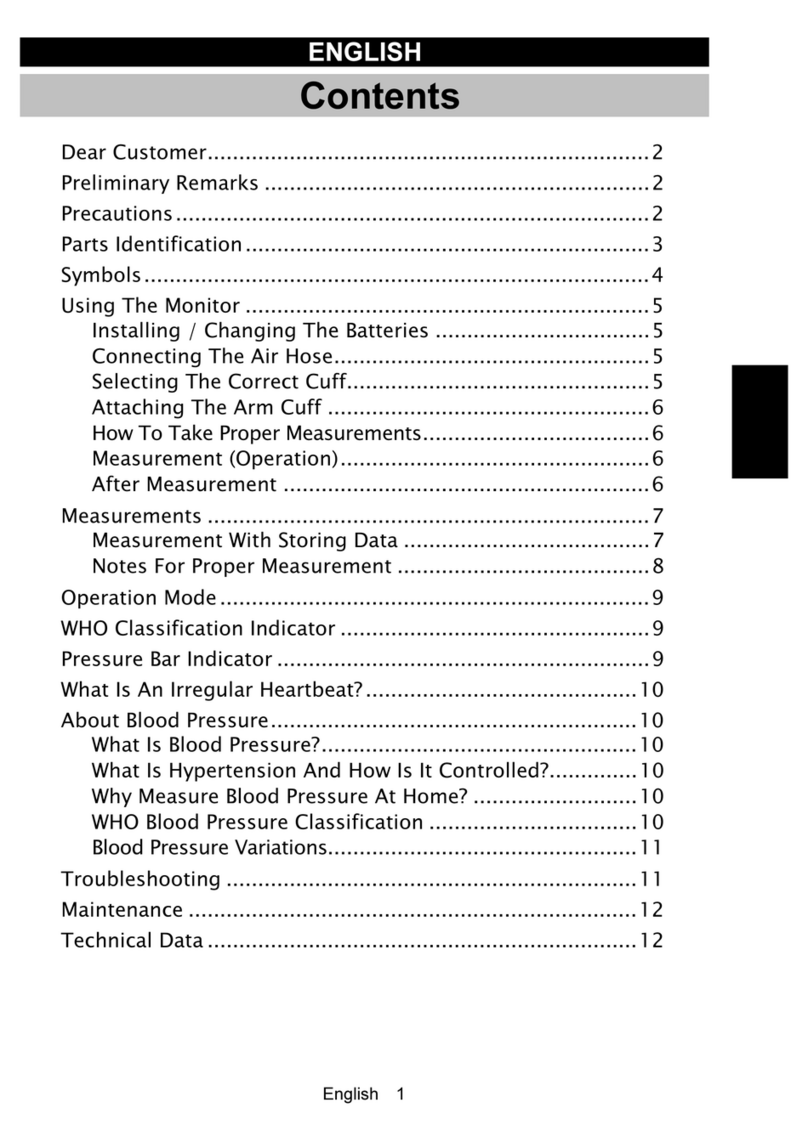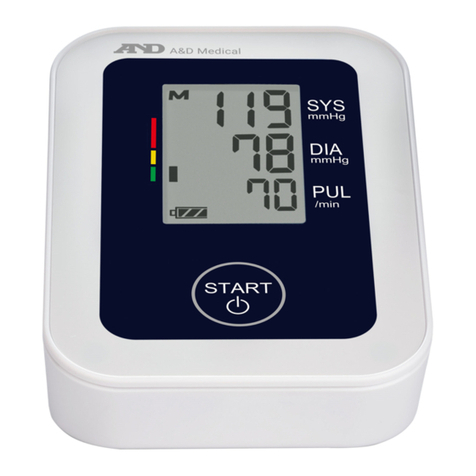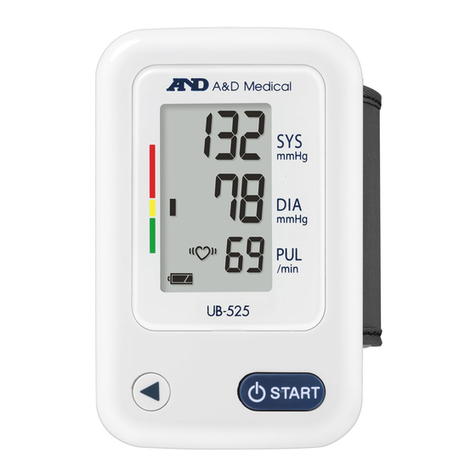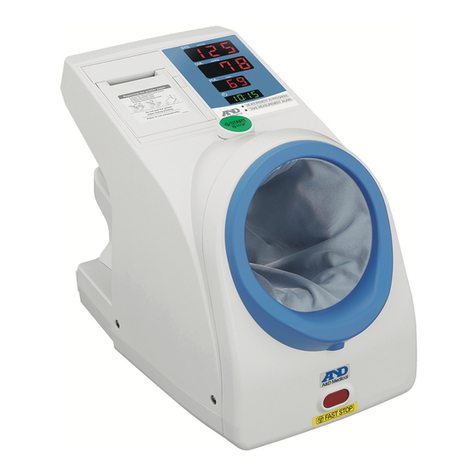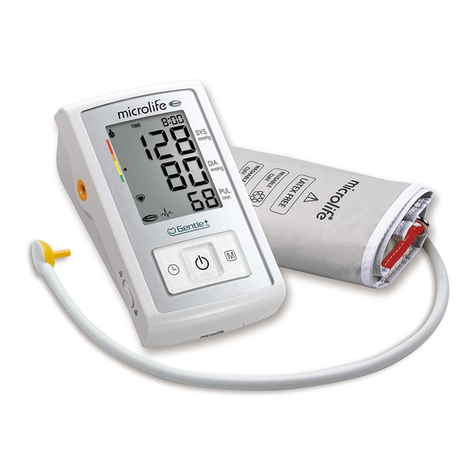
Precautions
• When the AC adapter is used, make sure that the AC adapter can be
readily removed from the electrical outlet when necessary.
• Do not modify the device. It may cause accidents or damage to the
device.
• To measure blood pressure, the arm must be squeezed by the cu
hard enough to temporarily stop blood ow through the artery. This
may cause pain, numbness or a temporary red mark to the arm.
This condition will appear especially when measurement is repeated
successively. Any pain, numbness, or red marks will disappear
with time.
• Take care to avoid accidental strangulation of babies or infants with
the hose and cable.
• Do not twist the air hose during measurement. This may cause injury
due to continuous cu pressure.
• Wireless communication devices, such as home networking devices,
mobile phones, cordless phones and their base stations, walkie-
talkies can aect this blood pressure monitor. Therefore, a minimum
distance of 30 cm (12") should be kept from such devices.
• Measuring blood pressure too frequently may cause harm due to
blood ow interference. Check that the operation of the device does
not result in prolonged impairment of blood circulation, when using
the device repeatedly.
• If you have had a mastectomy, please consult a doctor before using
the device.
• Do not let children use the device by themselves and do not use the
device in a place within the reach of infants.
• There are small parts that may cause a choking hazard if swallowed
by mistake by infants.
• Do not apply the cu on an arm in which another medical device is
attached. The equipment may not function properly.
• People who have a severe circulatory decit in the arm must consult
a doctor before using the device, to avoid medical problems.
